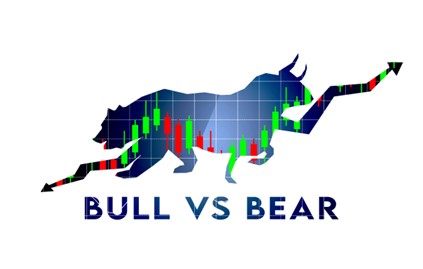Image Credit: Pixabay (Flickr)
Investors Always Have to Play the Cards They’re Dealt
Keeping your cool when faced with options that affect your investments will more likely translate into making better decisions. But often, when a stock goes against us or a bear market takes a bite out of our portfolio, we forget we have options. This could lead to doing nothing, doubling down at the wrong time, or unloading everything for a loss – then swearing we’ll never invest in another stock for as long as we live. Investors do have options; what is important is to look at where you are and not let the change in your portfolio remove good judgment.
Your Own Soft Landing
Investors are looking for ways to shield their portfolios after stocks gave back 10% so far in June alone. This followed a slow erosion throughout the year that amounted to another 10% or more. Just this Monday, the S&P 500 closed more than 20% lower than the highs reached at the start of 2022. Investors have come to define a bear market as a 20% decline from highs that would place us in a bear market. But it gets even more intense, on Wednesday, the Federal Reserve instituted the largest rate increase since 1994 in an attempt to hit the brakes on an economy that has become inflationary.
Aside from the market which is anticipating the Fed will be successful at creating a slowdown, the market may already be in a recession. First quarter GDP declined by 1.5%, putting us at risk of being in one already the first half of this year. However, Fed Chairman Powell indicated in his statement this week that the economy had accelerated during the second quarter. Concern is still high among investors, economists, business owners, and households about the path of the economy, or more accurately what the path means for them and what they may do now to have their own “soft landing.” There is a lot of fear bordering on panic across all the stakeholders in a healthy economy.
For investors, this elevated fear can cause questionable investment moves. Below are three typical moves investors have made when their once healthy portfolio took a bad turn. Just knowing them and also that others have lived through similar cycles could lead to better thought processes for an investor.
Doing Nothing – The deer in the headlights approach of just watching an oncoming car that may hit it is not uncommon. You want to do something but you’re frozen. For some, this occurs because each time they move to do something, they see signs that conditions may change. With so much going on in any economy, it is always possible to see anything you want to see.
It may make sense for investors that have experienced this to predefine actions they will take if certain events occur. For example, if the stock decreases in value faster than the S&P 500 index over the next week I will sell X.XX%. If the stock outperforms the S&P 500 index in the coming week, I will retain my holding and then watch for the same circumstances the following week.
Having a rules-based system to guide you or show you when your money is not employed in the best place can help prevent indecisiveness.
Hit the Sell Button on Everything – Individual investors tend to sell after an economic downturn is already priced into equity markets. Selling when stocks are 20% cheaper than they had been and below where you were once comfortable buying them locks in your loss. Getting rid of the paper loss allows the investor to not have to worry or watch it anymore. They bite the bullet and deal with it by making it go away. What caused the pain can’t hurt them any longer.
The decision is based more on figuring out how to stop the worry. If the same investor had missed buying the same stocks and was now looking at them down double digits, they may find the positions attractive. But, the red in their account does not allow for the same, clear, less emotionally clouded disposition for decision making.
The solution is to forget about where you bought it and decide if it is the best place for your money within your investment time horizon. If you believe you can get a better return elsewhere, then move. If you think the potential is strong and better than the alternatives, stop worrying about it.
Most humans are wired to have perfect bad timing when investing. They will watch something go up and wish they had bought it. About the time they give in and buy, the stock has peaked. The same happens with selling; when the holding is losing value, people tend to watch and not sell until it is near the end of its decline.
Doubling Down – With a long enough time horizon or a large enough pool of reserves, doubling down in a diversified portfolio has always paid off. However, sometimes it has taken 30 years. In recent history, the recovery time has been much shorter.
If you are looking to add to losing positions, approach with caution, and know, that the reality is you’re looking to find the bottom when the bottom may not be reached for another year. Average in if you can, spread your risk.
Take-Away
Knowing that the market moves in cycles and having faith that this time it is the same as other times helps one have a clear head to make investment decisions going forward.
Simplifying options and making a plan help the thought process and the implementation of investment moves. Any move should be weighed against the risk of inflation eating away at savings, credit card debt costing more than any investment return expectations, and making sure losses are never so big that you don’t have capital set aside for the next long-lived wave upward.
Managing Editor, Channelchek
Suggested Content
 Winners and Losers in a Market Capitulation
|
 Is the Bear Market Bull?
|
 Exposure to Non-Travel Leisure Stocks
|
 What Investors Haven’t Yet Noticed About the Value in Some Biotechs
|
Stay up to date. Follow us:

|

